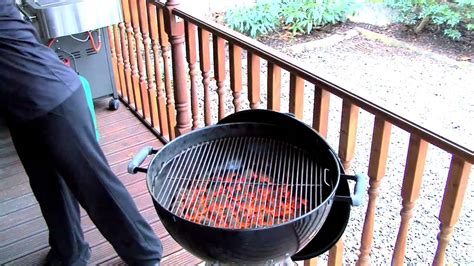Control the Heat, Master the BBQ: The Bandit Guide
Summer is here, and the smell of grilling is in the air. But achieving BBQ mastery isn't just about throwing meat on a hot grate. It's about understanding and controlling heat, the single most important factor in creating delicious, perfectly cooked barbecue. This Bandit Guide will break down the secrets to mastering your grill, no matter what type you own.
What Type of Grill Do You Have? Understanding Your Equipment
Before we delve into heat control techniques, it's crucial to understand your grill. Gas grills offer precise temperature control, while charcoal grills provide a more rustic, smoky flavor but require more attention to heat management. Even smokers, with their low and slow cooking, demand careful heat regulation. Knowing your grill's capabilities is the first step to mastering it.
Gas Grills: The Precision Powerhouse
Gas grills are known for their ease of use and precise temperature control. Most models feature adjustable burners, allowing you to create different heat zones on the grilling surface. This is key to indirect grilling, a technique we'll explore later. Learn your grill's hot and cold spots—even gas grills have subtle variations.
Charcoal Grills: The Flavor Maestro
Charcoal grills deliver an unparalleled smoky flavor, but they demand more attention. The amount of charcoal, its arrangement, and the air vents all influence the temperature. Understanding how to control airflow is paramount to success. Consider using a chimney starter for consistent ignition and better heat control.
Smokers: The Low and Slow Specialist
Smokers are designed for low-temperature, long-duration cooking. Maintaining a consistent temperature is crucial here. Temperature fluctuations can ruin a long smoke. Learn to manage your vents and fuel source (wood chips, charcoal) to maintain a steady temperature.
Mastering Heat Zones: Direct vs. Indirect Grilling
Understanding direct and indirect grilling is fundamental to BBQ mastery.
Direct Grilling: High Heat, Fast Cook
Direct grilling exposes food directly to the heat source. This method is perfect for searing steaks, burgers, or quickly cooking smaller items. The high heat creates delicious sear marks and cooks food quickly.
Indirect Grilling: Low and Slow Perfection
Indirect grilling involves cooking food away from the direct heat source. This is ideal for larger cuts of meat, poultry, and anything requiring longer cooking times. The lower temperature prevents burning while ensuring even cooking throughout. On a gas grill, this means turning off some burners and placing the food over the unlit ones. On a charcoal grill, it involves banking the coals to one side and cooking on the opposite side.
How to Control Heat on Different Grill Types
Let's look at heat control specifics for each grill type.
H2: Controlling Heat on a Gas Grill:
Gas grills offer the easiest heat control. Simply adjust the burner knobs to increase or decrease the heat. Use the different burner zones to create both high-heat and low-heat areas for direct and indirect grilling.
H2: Controlling Heat on a Charcoal Grill:
Charcoal grill heat management is more nuanced. The key is air flow:
- More Airflow = Higher Heat: Open vents fully for high heat.
- Less Airflow = Lower Heat: Partially close vents to reduce heat.
- Vent Placement: Experiment with vent placement to fine-tune the heat zones.
H2: Controlling Heat on a Smoker:
Smokers demand precise temperature control. Use a reliable thermometer to monitor the internal temperature and adjust vents and fuel accordingly. Maintaining a consistent temperature is critical for successful low-and-slow cooking. Many smokers feature water pans or reservoirs to help regulate temperature and add moisture.
Troubleshooting Common BBQ Problems
Even experienced grill masters face challenges. Let's address some common issues:
H2: My food is burning!
This often indicates the heat is too high. Move the food away from the direct heat source or reduce the heat.
H2: My food is undercooked!
This points to insufficient heat or cooking time. Increase the heat (safely!), check the internal temperature with a meat thermometer, and let it cook longer.
H2: My grill is unevenly heated!
This can be due to several factors, including uneven charcoal distribution (charcoal grills) or faulty burners (gas grills). Rearrange your coals or check your burners for proper function.
The Bandit's Secret Weapon: The Meat Thermometer
Regardless of your grill type, a meat thermometer is your best friend. It eliminates guesswork and ensures your food reaches the proper internal temperature for safety and optimal tenderness. Don't rely on visual cues alone!
Mastering your BBQ is a journey, not a destination. Experiment, learn from your mistakes, and most importantly, have fun! With practice and a solid understanding of heat control, you'll be serving up delicious, perfectly cooked BBQ in no time.

